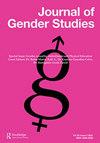Making intersex and non-binary people count? Ambivalent in_visibilities in the German microcensus
IF 1.5
3区 社会学
Q2 SOCIAL ISSUES
引用次数: 0
Abstract
This article discusses the recent introduction of ‘diverse’ and ‘no entry’ along ‘male’ and ‘female’ as gender categories in the German microcensus. It describes how intersex and non-binary survey participants are simultaneously made visible and invisible through different systems of gender classification and assignment. The article combines the analysis of documents by the Federal Statistical Office with expert interviews with activists and researchers working on legal and statistical gender identification from a non-binary and intersex perspective. Although two non-binary gender categories are included on paper at the point of data collection, they are subsequently randomly assigned ‘male’ or ‘female’ in data publication. Interviewed experts critically contextualize the survey practices of the microcensus and point to some of the problems with this approach. However, they also stress the non-linear connection between recognition and visibility and agree with data protection concerns related to super-visibility. Their criticism points towards several ways of rethinking gender classification and assignment in population surveys. This article contributes to discussions about the contested inclusion of subjects with marginalized gendered experiences into the population through legal and statistical technologies. Using the framework of in_visibility, it also points to the potentials and limitations of a politics of visibility.把双性人和非双性人算进去?德国微观人口普查中的矛盾不可见性
本文讨论了最近在德国微观人口普查中引入的“多样化”和“无条目”以及“男性”和“女性”作为性别类别。它描述了通过不同的性别分类和分配系统,双性人和非双性人是如何同时被显示和不显示的。这篇文章结合了联邦统计局对文件的分析,以及从非双性和双性人的角度对从事法律和统计性别认同工作的活动家和研究人员的专家访谈。虽然在数据收集时,纸上包含了两个非二元性别类别,但随后在数据发表时,它们被随机分配为“男性”或“女性”。接受采访的专家对微观人口普查的调查实践进行了批判性的背景分析,并指出了这种方法的一些问题。然而,他们也强调识别和可见性之间的非线性联系,并同意与超可见性相关的数据保护问题。他们的批评指出了重新思考人口调查中的性别分类和分配的几种方法。本文有助于讨论通过法律和统计技术将具有边缘化性别经验的主体纳入人口的争议性问题。利用in_visibility的框架,它还指出了能见度政治的潜力和局限性。
本文章由计算机程序翻译,如有差异,请以英文原文为准。
求助全文
约1分钟内获得全文
求助全文
来源期刊

Journal of Gender Studies
Multiple-
CiteScore
4.40
自引率
0.00%
发文量
52
期刊介绍:
The Journal of Gender Studies is an interdisciplinary journal which publishes articles relating to gender from a feminist perspective covering a wide range of subject areas including the Social and Natural Sciences, Arts and Popular Culture. Reviews of books and details of forthcoming conferences are also included. The Journal of Gender Studies seeks articles from international sources and aims to take account of a diversity of cultural backgrounds and differences in sexual orientation. It encourages contributions which focus on the experiences of both women and men and welcomes articles, written from a feminist perspective, relating to femininity and masculinity and to the social constructions of relationships between men and women.
 求助内容:
求助内容: 应助结果提醒方式:
应助结果提醒方式:


